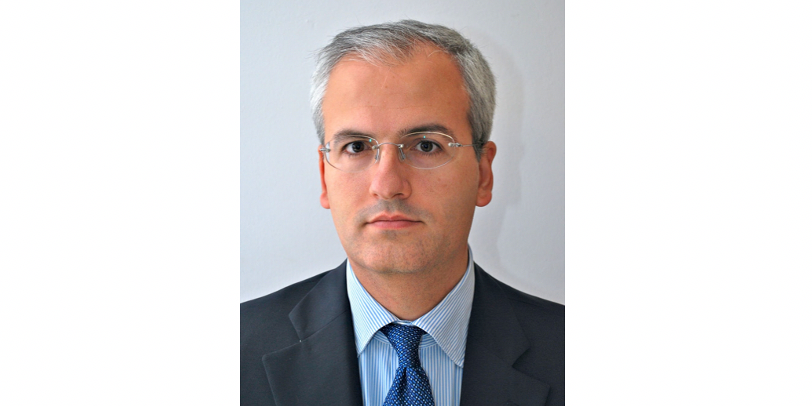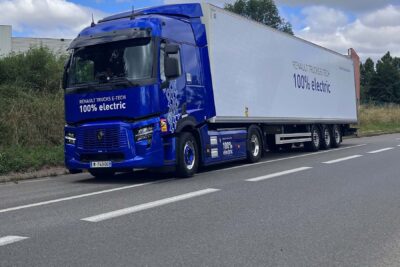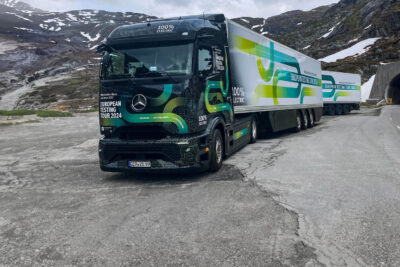Interview Giovanni Bertolino: Head of E-Mobility, Enel X North America
In this interview, Giovanni Bertolino, who is responsible for e-mobility at Enel X North America, describes the company’s overseas strategy that differs from the European approach in several ways.
As our editor Nora Manthey wondered, what a utility from Italy was doing in the USA, the conversation soon turned to in-depth knowledge of a segregated and yet progressive energy and charging market. The interview was conducted during a call between London and California.
***
How about we start with a quick positioning? Our readers know Enel and Enel X here in Europe. Now you are also active in the USA – it bears the question – why would the market need a player from Italy?
The Enel presence in North America goes back to the year 2000 when we first became a renewable energy generator in the United States. We expanded with further acquisitions, for example in 2017, we acquired eMotorWerks, who has developed the JuiceBox, a widely adopted residential level two charger.
So you are approaching the market through acquisitions – what is the focus?
We want to offer a full set of solutions for EV charging. So we have the hardware, we have the software, we have the energy management or energy services, we have solutions tailored for residential and commercial customers and utilities, using what we got from eMotorWerks and what Enel X had done in charging in Europe.
With the JuiceBox, for example– there is a range of services built around it, right?
We have a product line for residential, commercial and utility customers that includes Level 2 and a Level 3 DC fast charging solution. In that case, the hardware it’s not developed in-house, we are using a third-party device, which has been integrated with our IoT platform and our software solution called JuiceNet which is the platform that we use to manage all our chargers.

Let’s stay on the DC level for the moment. Do you run a DC charging network in the US? In Europe, you mostly rely on roaming partners like Hubject.
We have been working on roaming partnerships in the US as well. Only I cannot announce anything at the moment, but we are in conversation. Differently from Europe, we have no plan to become a public charging network operator in the States.
Is that because the North American market is too difficult or too decentralised?
Well, it is two things. The US and especially Southern Europe are very different in the way people are charging their EVs. In Europe, most housing is multi-unit dwelling, so you need to provide widespread access to public charging and given our presence as the primary energy distribution in Italy and Spain, we felt a commitment to contribute to electrification and provide the public charging infrastructure.
Here in the United States, around 80% of charging is happening at homes. So our focus is really to serve our residential customers and now to expand towards fleets and charging at the workplace or commercial spaces.
So that means mostly AC charging?
Yes. For the home, our level two chargers with 32 to 48 Amp and we are also going to have 80 Amp model. The same range of product is available for commercial uses, only with features like payment mechanism via RFID or universal payment terminals. It’s a smart charger.
When you say smart charger, what are these in the Enel X world?
There is a range of smart charging features. On a very basic level, the user can decide when and how to charge, but also it allows to leverage time of use rates from utilities. We offer to optimise charging depending on the carbon intensity of the grid at every moment in time via JuiceNet Green. We have all this information from all the different grids and markets in the United States and know the relative average carbon intensity at every moment in time.
However in a market like the United States, how do you receive this data reliably?
The United States is a patchwork of very different mechanisms. There are states or regions which have organised markets. In the United States, that’s seven markets where generators are feeding each other, and there’s a market operator who sends us the price. Those are truly the most populated regions, like California, Texas and New York, New England – most of the states in the Northeastern and in the central area. It’s very similar to what you have in the UK, Italy and Spain or Germany. In other regions of the United States, there are still vertically integrated utilities, there is no open market, so you don’t have that access to the information, or it is very indirect.
So that sounds like a limited market?
We are also working with the vertically integrated facilities. In these cases, we are using the smart charging capabilities and demand response, which includes knowing how the chargers are behaving to advanced features like time of use rates designed to optimise the load. Utilities can send us a signal so that we can manage the charges and the utility then provide the monetary incentives to drivers. This has been very successful in those regions where you don’t have a market, such as Seattle or Hawaii, for example.

Let’s move on to fleets. Have you got a specific approach to them because the JuiceBox suite is essentially the same as for private clients to start with?
We are seeing a lot of interest from two kinds of fleets – those that have medium- and heavy-duty vehicles which are usually sitting in a depot and deploy from there. So for this kind of fleet, we’d suggest the 80 Amp charging station or the JuicePump DCFC. Our solutions also offer load balancing across a fleet of chargers.
Which is the usual approach.
Indeed but what we find it very interesting that there is a number of fleet operators with corporate vehicles for their employees to take home. In this case, we can deploy our chargers. This is very powerful because it has a very low cost of upgrading the system – you just give a charger to your employees and pay for the installation.
Thinking about fleets where drivers take the car home, ride-sharing companies like Uber and Lyft come to mind that vowed to help drivers to electrify the fleet. Have you approached these businesses?
Having read what Lyft has announced (on going fully electric by 2030, Ed.) and I’m sure that Uber and others are planning to do very similar things – I think there is a great opportunity there to electrify ride sharing.
And at a large scale…
Yes, we are talking a lot of mileage – a typical Uber or Lyft driver drives probably four or five times more than an average driver, about 150 – 200 miles on a single day. In terms of charging it’s not huge, the average mileage per kilowatt-hour it’s about 3.6 to 3.7 m/kWh. So at about 200 miles, we’re talking about four to six hours of charging per day. That means electrification is absolutely doable now, but it will be creating much additional demand for electricity and load. But we are managing that already with some utilities in North America.
Can you give an example of the scale of such a partnership with a utility please?
Yes, in California, we aggregate thousands of chargers. We have 68 megawatts of total capacity, and that load participates in the Californian market. Whenever CAISO, the California Independent System Operator, needs to reduce peak, they send us a signal, and we lower the charge to help the system keep the balance. What we get paid from the system to do that, we share with the driver in the form of JuicePoints.
In Europe, high power charging is moving up on the agenda. What is your position in North America?
We are working towards expanding HPC in our product line-up. Our strategy is to select a partner and integrate it with our software platform. It for sure will come, but at the moment, there are very few vehicles available that can really leverage such high power charging. Even in the US, there is a segregation of the market because Teslas, the most common EVs, have their proprietary platform, and even they do not go beyond 250 kWh of charging so I don’t see an immediate need.
You just mentioned Tesla. Carmakers are building DC charging networks, also in the US. Tesla was the earliest example, VW has Electrify America, and Rivian is starting to do it. As an energy company, are you feeling increasing pressure from automotive companies?
Tesla decided to go for this fully vertically integrated mobility, that was part of their proposition – they wanted to offer electricity to their drivers and to be a closed system. The others use open standards.
So they can compete.
Well, Volkswagen after diesel-gate, they found a very neat way to use their fine and the network also helps the business. But Electrify America is buying chargers from four different suppliers, not developing their charger technology. Our role is to be hardware and software or providers, and we could very well be supplying them in future.
And Rivian?
Rivian is building around the concept of the pick-up truck, trying to differentiate themselves around the experience with those kinds of vehicles. They are looking at deploying chargers in locations, which are currently not very well served like national parks, remote areas. So it’s not like they’re building a network – they just want to reach those areas where their customers buying those SUVs would like to go.
Talking about networks, where is Enel X at in North America?
Definitely growing. We already have over 60,000 charging stations in North America, most of them residential customers, and we’re seeing this market expanding. Europe is a bit behind compared to the United States, except Norway and certain regions. Maybe in the next few years, Europe might go faster because states like Germany and France are putting powerful incentives on the table. Here, there’s been a bit of a slowdown in terms of policymaking because of the current administration, but we are hoping for recovery. Already there is electrification on all levels, also public transport. In the US, there are 500,000 school buses.
Do you have chargers for this kind of large vehicles?
Yes, we do have solutions for the buses, and that’s something that we’re targeting very actively. When it comes to public transit infrastructure, we can provide turnkey solutions, of course, we do not manufacture the bus. It’s something that Enel X has done in Latin America, in Santiago de Chile or Columbia, where we’re putting hundreds of electric buses in the streets. We’re preparing to do this in the United States as well.
You mentioned incentives in Europe, one example is a new regulation for buildings to provide options to install charge points. What kind of programme you think is most needed in the US?
The US has very strong experience in incentive programs. Zero-emission policies in several states have been very effective as well as the tax breaks, although I don’t think they are that needed anymore. The cost of an EV almost matches the cost of a regular car. Definitely supporting the infrastructure will go a long way into increasing adoption. For individual homes, it is straightforward, in San Francisco, one in five households has an EV. We’re not on the level of Norway yet, but very close. Now the next wave is to incentivise and push the charging infrastructure into multi-unit dwellings and commercial space.
Thank you for the conversation!






0 Comments